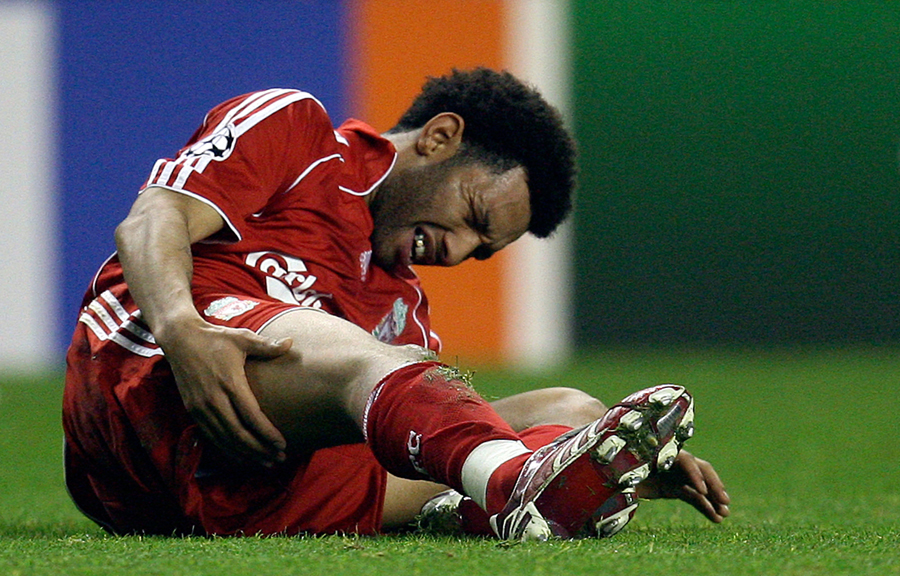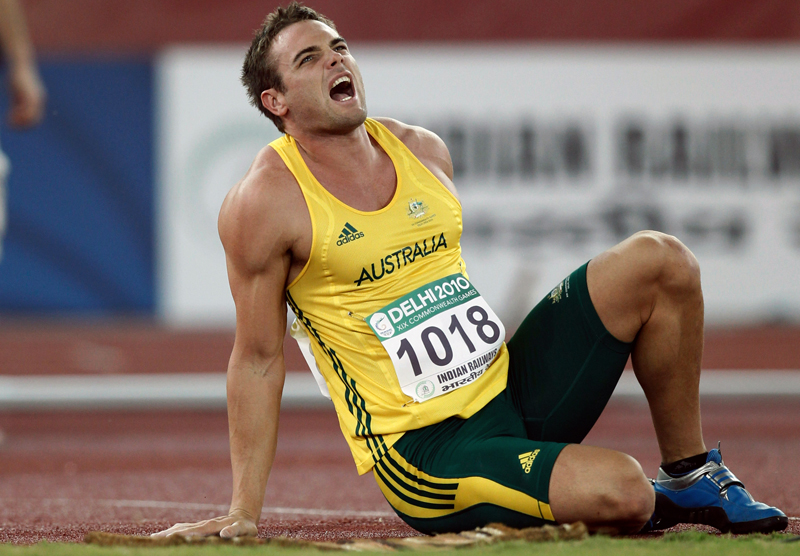You are viewing 1 of your 1 free articles. For unlimited access take a risk-free trial
Beating back pain: six of the best
SPB looks at new research on effective exercise therapies to alleviate and prevent lower back pain. The results may surprise you!
As an athlete who has personally suffered from bouts of back pain in the past, I can tell you that if you have never suffered from low back pain, you should consider yourself very fortunate! Indeed, data from the UK indicates that no less that 49% of the UK population reports back pain lasting at least 24 hours at some point each year, and 4 out of 5 adults will experience back pain at some point in their life(1). Moreover, given that obesity and inactivity are known to be risk factors for developing lower back pain(2), the incidence of back pain in the general population has almost certainly increased with each passing year.
Low back pain in athletes
Athletes are leaner, stronger and more active than the general population, so naturally you might expect the incidence of lower back pain/injury to be much less of a issue. The problem is that low back pain (LBP) can and does occur in athletes, and is very debilitating and frustrating when it does. LBP can result in missed training days, missed competitions, and missed opportunities for selection. And while it’s often possible to train around many other injuries, a lower back injury is very limiting. When someone is suffering from acute back pain or spasms, even the lightest activity and movements can become too painful to endure.
When it comes to the incidence of LBP in athletes, the data shows that while it varies across different sports, it is not an insignificant problem. A systematic 2023 review and meta-analysis study (a powerful methodology that pools data from a number of previous studies to provide more robust evidence than a single study) found that elite soccer players have a substantial prevalence of LBP, with at least 32% of male players and 50% of female players experiencing at least one LBP episode in their career(3).
Another review study reported on previous research indicating that the incidence of LBP in athletes is actually significantly higher than that in non-athletes (possibly brought about by higher spinal loading than in the general population)(4). Furthermore, other research has reported that more than 30% of athletes can be expected to develop LBP during training and about 75% of elite athletes have had a history of one or more episodes of LBP(5,6).
Beating back pain
When a lower- back injury strikes an athlete, training and competition become nigh impossible so getting back to full fitness as rapidly as possible is critical. In the early stages of a back injury, it’s likely that normal activity will be severely curtailed, with rest and anti-inflammatory medication the only treatment initially. However, following the initial phase, doing nothing at all is not a good route to rapid recovery, and the continuation of normal daily activities is now recommended by medical practitioners for those patients with non-specific causes of low back pain(7). This is preferred to bed rest, which has not been shown to have a positive effect.
The question of course is what kind of rehabilitation activities are recommended and most effective for helping athletes get full sporting functionality back, and (just as importantly) preventing a relapse? This is a tricky question to answer as there are a multitude of LPB causes and each individual is likely to respond slightly differently to a treatment or course of rehab exercises. One thing that is not in doubt however is that numerous studies prove some kind of exercise therapy is both effective in reducing pain and disability, and also cost-effective(8,9). Moreover, in 2017, the American Medical Association stated that ‘exercise therapy is the preferred treatment for LBP’(10), while in Europe, exercise therapy is recommended as a first-line intervention for the management of chronic LBP(11)
Core principles
Common to many exercise therapy modes used to rehab LBP is the concept of ‘core stability training’. Core training is based on the principles of motor learning methods and emphasizes the neurological activation of the deep muscles of the tummy and lower back, particularly the transversus abdominis and multifidus muscles. By strengthening these deep core muscles, the vertebral segments of the spine can be stabilized during global movements, allowing better coordination of the trunk muscles in the abdomen, back, and buttocks. This is turn enhances trunk muscle endurance, providing more stable support for the spine and effectively reducing the burden on the lower back muscles(12). Research shows that during core training, the body continuously receives sensory information from muscles, joints, the inner ear, etc, which can not only regulate the nerve reflex arc, accelerate the nerve conduction speed, but also improve proprioception (the sense of where the limbs are in 3-D space), correct postural disorders, and further enhance the stability of the spine(13).
Comparing approaches
There are many exercise therapy approaches to help overcome LBP that incorporate core activation and strengthening. Some of these include core stability training, Yoga, Tai Chi and aquatic therapy, but if you’re recovering from a lower back injury, which of these is most effective? To date, no research has been carried out to investigate this question, but now a brand new study by Chinese researchers has come up with some fascinating findings(14).
In this study, which was published in the journal ‘BMC Musculoskeletal Disorders’, the researchers compared six types of exercise therapy that have been proposed to help the recovery from and the prevention of back pain(15). These exercise therapies were as follows:
· Conventional core stability training
· Tai Chi
· Aquatic therapy/water exercises
· Yoga
· Sling exercise
· Combined training (combinations of two or more items such as muscle strength training, flexibility training, core stabilizer muscle training).
Box 1 describes these therapies in more detail and the scientific rationale for their inclusion in the study.
Box 1: Six exercise therapies for lower back pain recovery and prevention
Core activation – is a training method focused on activating and recruiting the core stability muscles, notably the erector spinae and multifidus. The activation of these core muscles depends on a diffuse neuronal network. Studies show that in patients with LBP, these networks are abnormally organized, and there is a delay in postural adjustment, leading to instability in the vertebra of the lower spine(16,17).
Tai Chi is a traditional Chinese training method known to enhance muscle strength and endurance, and also improve the body’s balance and coordination abilities, significantly reducing lower back pain(18,19). When practicing Tai Chi, the goal is to concentrate attention and coordinate with breathing, which helps practitioners relax both physically and mentally, reducing mental stress, in turn reducing tension-related pain of the lower back muscles.
Aquatic therapy is a therapeutic approach that utilizes the properties of water to relieve pain, relax muscles, and promote motor function(20). The buoyancy of water can effectively reduce the pressure on the lower back and relieve the load on the intervertebral discs. At the same time, the stimulation of water can also enhance proprioception, improve neuromuscular control ability, and maintain the stability of the spine(21).
Yoga is a complex exercise therapy that involves multiple aspects such as the musculoskeletal system, respiratory system, and nervous system. Research shows that there are a number of mechanisms by which yoga can relieve LBP, including strengthening the deep muscles of the lower back, such as the erector spinae and multifidus, as well as the strength of the gluteus maximus (buttocks) and core muscle groups, lengthening and relaxing the lower back muscles, alleviating soreness and stiffness and expanding the range of motion of the lumbar joints, promote the secretion and circulation of synovial fluid, and thus relieve LBP caused by joint problems(22-24).
Sling training is a high-order core stability training method, which is conducted in an unstable support environment, thus prompting the body to recruit more deep muscles to participate in activities to maintain balance and stability. This training method can not only effectively improve the activity performance of tranversus abdominis and multifidus, but also prevent the recurrence of LBP by maintaining the stability of spinal segments(25,26).
Combined training integrates various exercise methods and training techniques, which can comprehensively improve physical functions and athletic abilities. Through the superimposed training of muscle strength and stretching, the muscles and fascia of the lower back and its surrounding areas can be lengthened and relaxed, and the adhesion between muscle fibers reduced - thus relieving the tension of the muscles and fascia and reducing pain and discomfort in the lower back(27).
What they did
Based on the above, the researchers used a meta-analysis approach to verify the effectiveness of six exercise intervention therapies in treating LBP. In particularly, they looked to see how exercise session duration, exercise frequency, exercise intervention period affected the outcomes achieved. In total, 42 studies covering these six methods met the inclusion criteria and were included for analysis. All of these studies contained an exercise intervention and a control group, allowing the researchers to assess how effective an exercise intervention was for alleviating LBP compared to no intervention (ie doing nothing other than resting). The included studies were divided into three groups for training session duration: less than 30 minutes, 35 to 50 minutes and 60 minutes or more. Likewise, the included studies were sub-grouped to frequency categories of less than 3 times per week, 3-4 times per week, and more than 4 times per week. The length of exercise intervention was also investigated to see how it impacted outcomes; the researchers looked at interventions of 1-4 weeks, 5-8 weeks and longer than 12 weeks.
When it came to exercise session duration, short sessions of up to 30 minutes were found to be the most effective, and significantly more effective than longer sessions. Linked to this was exercise frequency, where four sessions of more per week proved significantly more effective than three or less. The researchers commented that a higher number of short sessions per week were likely to be more effective because it’s easier to concentrate and ensure a high quality of movement/muscle activation for a short period of time than a long period. Moreover, repeating these high-quality sessions frequently is optimal for the kind of neural learning/programming required when trying to re-educate core muscles to contract correctly.
Another key finding was that exercise programs lasting around four weeks were particularly effective, much more so than interventions lasting around eight weeks. This again may be as a result of greater focus when performing a new and short program, and not falling into sloppy habits that sometimes happens when an exercise intervention becomes ‘routine’. In summary then, the overall suggestion from these findings is that Yoga, core training on an unstable platform and Tai Chi performed for just 30 minutes, 4 x per week and for repeated periods of four weeks with a break in between each 4-week period are the most effective exercise therapies to overcome and prevent LBP.
Using this knowledge
Unlike some research, which can very nuanced, the findings from this new research were fairly clear cut: in order to recover from or prevent back pain, regular blocks of Yoga, Tai Chi or sling training performed for 30 minutes, four times per week are likely to be your best option. The ‘little and often’ recommendation is great news for athletes, as it makes any exercise therapy easier to integrate into training program and fit around the demands of day-to-day life.
As to which to chose, any of the three exercise therapies mentioned above will likely yield good results so choose whichever you personally prefer. If you’re unfamiliar with practices such as Yoga and Tai Chi, you may prefer getting some experience under your belt in a class setting with an experienced teacher, who can ensure your movements are precise and correct. Alternatively, there are many excellent DVDs and online tutorials that can help your learn. Remember too, these exercise interventions are not mutually exclusive, so you can mix and match if you prefer lots of variety.
A final note of caution however; in the acute stages of back pain (ie just after sustaining an injury), you’ll likely be experiencing a lot of pain and even small movements may be extremely painful. This is not the time to begin exercise therapy as you’ll just worsen the pain and inflammation. You will need to rest for a few days first, possibly with anti-inflammatory medication while the initial inflammation subsides. Warm baths/hot water bottles and gentle massage can also help at this stage, helping to dissipate the inflammation and relax any muscles that may have gone into spasm.
References
1. British Medical Journal 2000. 320, p1577-1578
2. Andersson GBJ. The epidemiology of spinal disorders. In: Frymoyer JW (eds) The Adult Spine: Principles and Practice. Philadelphia: Liipincott-Raven, 1997
3. Acta Ortop Bras. 2023 Dec 18;31(6):e266012
4. Scand J Med Sci Sports. 2017;27:448–54
5. Br J Sports Med. 2021;55:656–62
6. Int Orthop. 2019;43:833–40. Arch Pediatr Adolesc Med. 1995;149:15–8
7. Physical Therapy 2001. 81, p1641-74
8. Cochrane database Syst Rev,2023,8.Cd009365
9. Cochrane database Syst Rev,2021,9.Cd009790
10. J.Ann Intern Med,2017,166.514-530
11. J Eur Spine. 2006;15(Suppl 2):S192–300.
12. J Anat 2014. 225;447-462
13. BMC Musculoskelet Disord,2021,22.998
14. BMC Musculoskelet Disord. 2025 May 1;26(1):433. doi: 10.1186/s12891-025-08658-0
15. Chinese Journal of Evidence-Based Medicine,2019,39.19-29
16. Neural Plast,2021,2021.6666024
17. Spine J,2018,18.1934-1949
18. Pain. Medicina (Kaunas) 2019. 55
19. Pain 2008. 134.310–9
20. BMC Musculoskelet Disord,2022,23.1050
21. Biol Res Nurs,2023,25.527-541
22. Ann Intern Med,2017,167.85-94
23. J Orthop Sports Phys Ther,2022,52.470–83
24. Int J Yoga,2014,7.48-53
25. N Am J Sports Phys Ther,2010,5.63-73
26. J Fysioterapeuten,2009,76.16-25
27. BMC Musculoskelet Disord,2020,21.809
Newsletter Sign Up
Testimonials
Dr. Alexandra Fandetti-Robin, Back & Body Chiropractic
Elspeth Cowell MSCh DpodM SRCh HCPC reg
William Hunter, Nuffield Health
Newsletter Sign Up
Coaches Testimonials
Dr. Alexandra Fandetti-Robin, Back & Body Chiropractic
Elspeth Cowell MSCh DpodM SRCh HCPC reg
William Hunter, Nuffield Health
Keep up with latest sports science research and apply it to maximize performance
Today you have the chance to join a group of athletes, and sports coaches/trainers who all have something special in common...
They use the latest research to improve performance for themselves and their clients - both athletes and sports teams - with help from global specialists in the fields of sports science, sports medicine and sports psychology.
They do this by reading Sports Performance Bulletin, an easy-to-digest but serious-minded journal dedicated to high performance sports. SPB offers a wealth of information and insight into the latest research, in an easily-accessible and understood format, along with a wealth of practical recommendations.
*includes 3 coaching manuals
Get Inspired
All the latest techniques and approaches
Sports Performance Bulletin helps dedicated endurance athletes improve their performance. Sense-checking the latest sports science research, and sourcing evidence and case studies to support findings, Sports Performance Bulletin turns proven insights into easily digestible practical advice. Supporting athletes, coaches and professionals who wish to ensure their guidance and programmes are kept right up to date and based on credible science.











